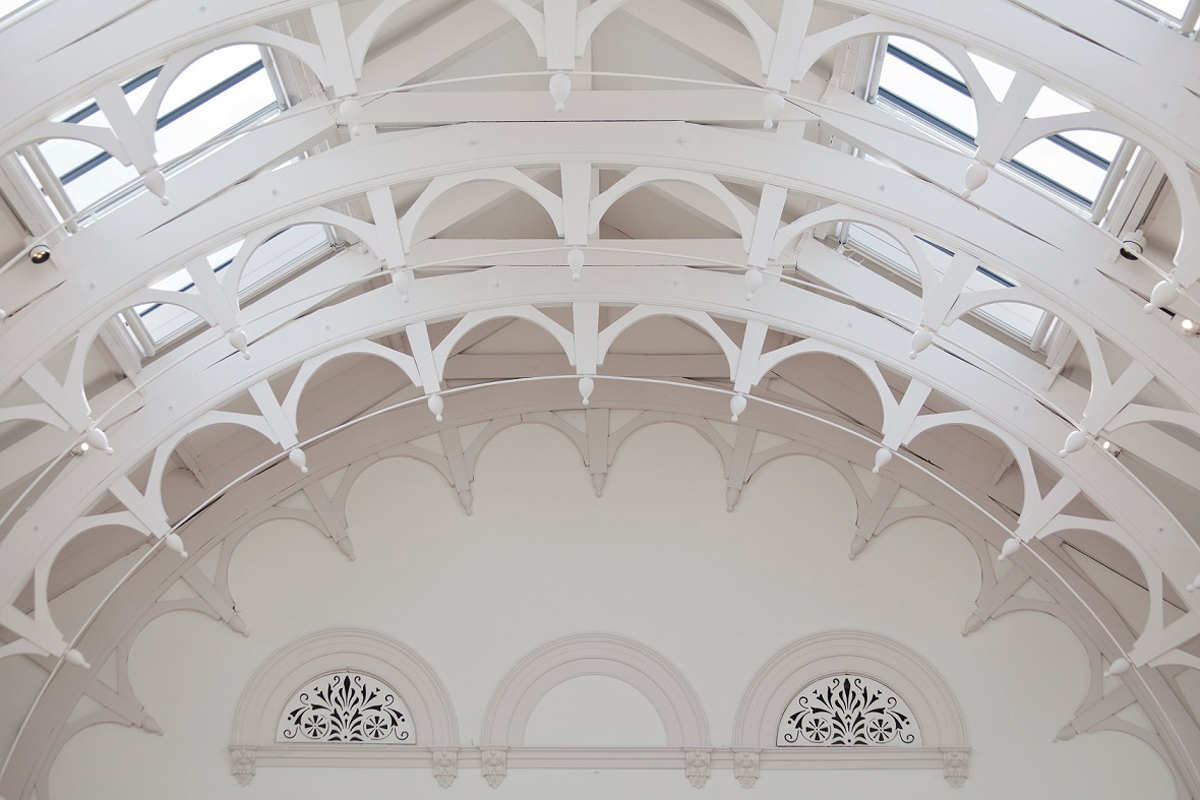
When Janet Barnes first joined the York Art Gallery in 2002, she was let in on a staff secret. Hidden away behind a little door off the Victorian building’s narrow first-floor gallery was a secret roof space concealed behind a false ceiling. ‘You would have no idea from the ground floor that it actually existed,’ explains the chief executive of the York Museums Trust.
This month, the vaulted timber roof space – now restored and exposed – opens after decades hidden from public view. A new mezzanine floor is set back from the front of the building, allowing visitors to enjoy the impact of the hall’s original and full 15m height as well as its decorative trusses and ornate plaster work.
Flooded with daylight from the skylights above and a wall of fan light windows, the mezzanine gallery is too bright for paintings but provides the perfect space for the museum’s vast collection of British ceramics – the largest in the world.
Of course, the roof’s spectacular resurrection is just one part of this £8 million overhaul helmed by Edinburgh conservation architects Simpson & Brown together with Ushida Findlay, who won the project in a tender competition in 2011.

Originally designed by Edward Taylor with JB and W Atkinson, the gallery opened in 1879 for the second Yorkshire Fine Arts and Industrial Exhibition but has undergone many modifications over its lifetime. Simpson & Brown’s new vision is a perfect balance of conservation and intervention.
‘I have this argument so often about change,’ says Andy Davey, partner at Simpson & Brown. ‘Conservation is about keeping buildings alive: if you don’t change anything, then they won’t survive. I think what’s been done here has absolutely transformed this building.’

Two original marble columns were uncovered and restored to their former glory in the entranceway while a 1950s industrial extension to the rear now houses an art store, offices and a new balcony. Behind the building – where an even bigger, second timber-framed hall once stood before being bombed in 1940 – two acres of wasteland and asbestos-ridden huts have been cleared and are in the process of being replaced by landscaped public gardens, due to open in the autumn.
Wrapped by an ancient wall that stems from the nearby ruins of St Mary’s Abbey, the new gardens will connect to the exhibition square at the front of the building via a ‘snickelway’ (a local term for alleyway), that runs along the side of the museum. ‘The idea is to make it as permeable a space as possible,’ explains Barnes. ‘We wanted to open the grounds up to the public, to encourage people to connect one building with another and make use of the circular routes.’

An exterior shot showing the new first-floor extension. A new gallery space, it has been clad in 300 hexagonal ceramic tiles in varying hues of blue

The extension is clad in Rosemary sett tiles which pay homage to the city’s historic cobbled streets. Photography: Mike Linstead
As well as the new mezzanine space, another first-floor gallery has been created in place of an old iron roof space on the southwest elevation. The boxy extension, which also houses ceramics, is particularly striking from outside. Its exterior is clad in more than 300 blue hexagonal tiles in a nod to the Victorian Rosemary sett tiles found on the city’s pavements – a fitting choice for the Gallery’s new status as Centre of Ceramic Art (CoCA).
Combined, the new additions have boosted the gallery’s floor space by a colossal 60%, all while keeping within its existing footprint – ‘pretty good public value for £8 million,’ as Barnes puts it.





















